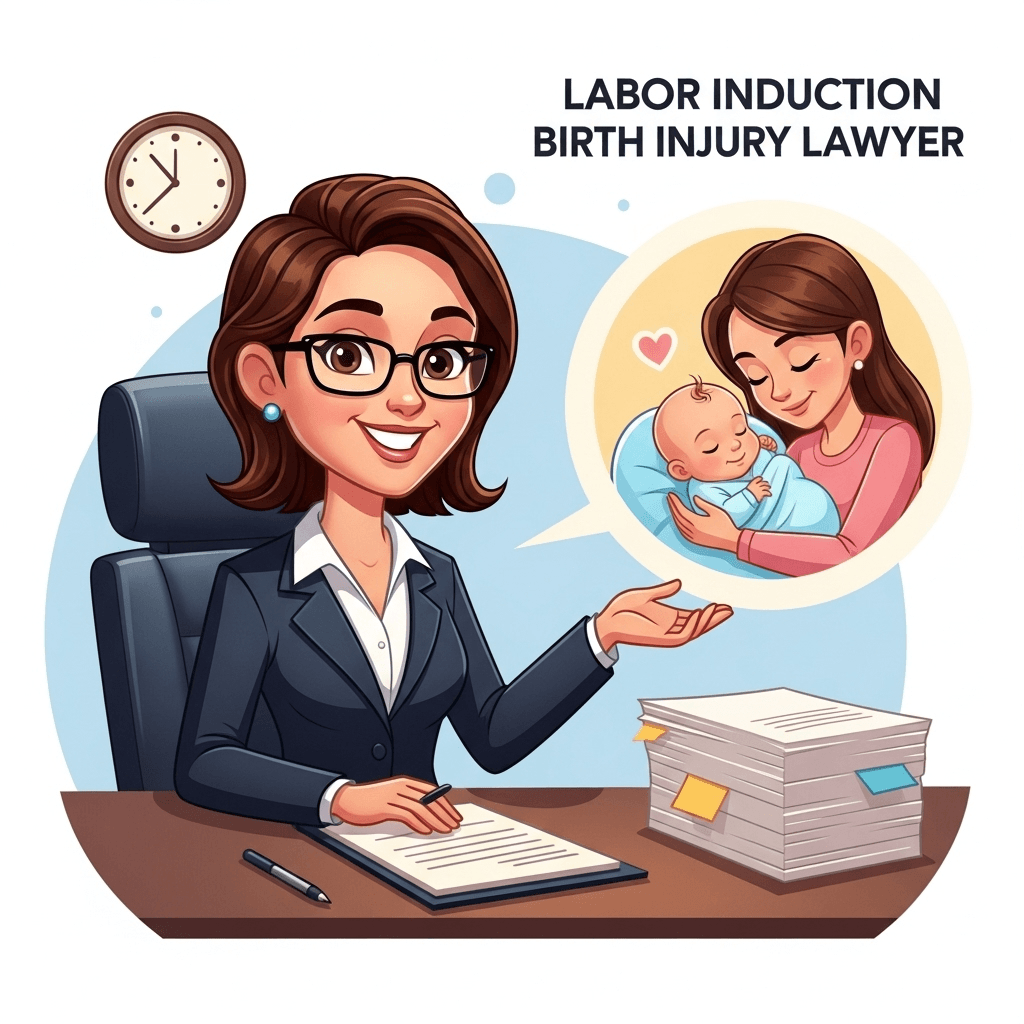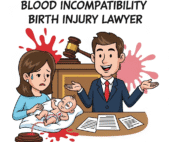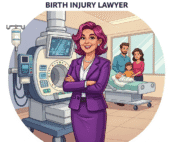The natural progression of labor is a remarkable physiological process, yet sometimes, medical intervention becomes necessary to guide it. Among the most common interventions is the induction or augmentation of labor, often achieved with medications like Pitocin (synthetic oxytocin) to stimulate contractions. While intended to facilitate a safe delivery, the powerful nature of these drugs demands meticulous administration and vigilant monitoring. Tragically, when these medications are used improperly, or their effects are not carefully observed, they can lead to severe and preventable birth injuries, particularly from oxygen deprivation. If your child suffered a life-altering injury following labor induction or augmentation, the emotional devastation and financial burden can be immense. You are not alone. Our compassionate Labor Induction Birth Injury Lawyers at CPFamilyHelp.com are fiercely dedicated to investigating medical negligence and securing the comprehensive compensation your child will need for their entire life. When interventions meant to help lead to harm, securing a dedicated Labor Induction Birth Injury Lawyer is a crucial step for justice.
Understanding Labor Induction and Augmentation: Medical Assistance in Childbirth
Labor induction is the process of artificially stimulating uterine contractions before labor naturally begins. Labor augmentation is used to strengthen or regulate contractions once labor has already started but is progressing too slowly. Both procedures commonly involve the administration of Pitocin, a synthetic form of oxytocin.
Pitocin works by causing the uterus to contract. While beneficial when used appropriately, it carries significant risks if mismanaged:
- Uterine Hyperstimulation (Tachysystole): Too much Pitocin, or too rapid an increase in dosage, can cause contractions to become too frequent, too strong, or last too long. This leaves insufficient time for the baby to receive oxygen between contractions.
- Fetal Distress: When uterine hyperstimulation occurs, it can deprive the baby of oxygen, leading to distress that manifests on the fetal heart rate monitor.
- Uterine Rupture: In rare but severe cases, hyperstimulation can lead to a tear in the uterine wall, especially if the mother has a previous C-section scar, posing a life-threatening risk to both mother and baby.
Because of these inherent risks, nurses and physicians must adhere to strict protocols for Pitocin administration, including continuous fetal monitoring and careful adjustment of dosage. When these protocols are breached, an experienced Labor Induction Birth Injury Lawyer will investigate the details.
The Alarming Link: Medical Negligence in Labor Induction Leading to Birth Injuries
Many severe birth injuries stemming from labor induction or augmentation are entirely preventable and result directly from medical negligence. Our Labor Induction Birth Injury Lawyers specialize in meticulously investigating these critical failings in the standard of care:
- Improper Administration of Pitocin/Oxytocin:
- Cause: Administering too high a dose of Pitocin, increasing the dosage too quickly, or continuing administration when it’s clear the mother is hyperstimulated or the baby is in distress.
- Relation to Negligence: Errors in judgment, calculation, or failure to follow established hospital protocols for medication administration.
- Failure to Adequately Monitor Mother and Fetus:
- Cause: Neglecting to continuously monitor the mother’s contractions (frequency, duration, intensity) and the baby’s heart rate response (FHR). This oversight can lead to hyperstimulation or fetal distress going unnoticed.
- Relation to Negligence: Inattentiveness, inadequate staffing, or equipment malfunction (if not addressed), preventing timely detection of complications. This is a common concern for a Labor Induction Birth Injury Lawyer.
- Delayed or Improper Response to Fetal Distress or Hyperstimulation:
- Cause: Even when signs of hyperstimulation or fetal distress (on the FHR monitor) are recognized, there can be an unacceptable delay in reducing or stopping the Pitocin, changing maternal position, administering oxygen to the mother, or, most critically, preparing for an emergency C-section.
- Relation to Negligence: Slow reaction times by the medical team, poor communication, or a lack of preparedness for emergency interventions. This delay is a frequent basis for claims evaluated by a Labor Induction Birth Injury Lawyer.
- Inducing Labor When Contraindicated:
- Cause: Initiating labor induction when it is medically inappropriate or poses undue risks (e.g., in cases of certain placenta abnormalities, active herpes lesions, or previous uterine surgeries that increase rupture risk).
- Relation to Negligence: A physician making an ill-advised decision to induce labor despite clear contraindications.
In these situations, the delicate balance between stimulating contractions and ensuring fetal well-being requires constant vigilance and expert judgment. When medical professionals fail to meet this standard, our Labor Induction Birth Injury Lawyers are here to hold them accountable.
Recognizing the Devastating Outcomes: Birth Injuries from Induction Negligence
The most severe consequence of improper labor induction or augmentation is often brain damage due to prolonged or acute oxygen deprivation (birth asphyxia). This can lead to lifelong neurological conditions. Our Labor Induction Birth Injury Lawyers help families whose children suffer from:
- Hypoxic-Ischemic Encephalopathy (HIE): This is brain damage specifically caused by a lack of oxygen and blood flow, and it is a very common and devastating consequence of hyperstimulation induced by Pitocin.
- Cerebral Palsy: HIE frequently leads to cerebral palsy, a group of disorders affecting movement, muscle tone, or posture. The type and severity of CP depend on the extent and location of brain damage from the oxygen deprivation.
- Developmental Delays: Impairments in cognitive function, motor skills, speech, and learning abilities.
- Seizure Disorders/Epilepsy: Brain damage from oxygen deprivation often triggers chronic seizures.
- Intellectual Disabilities: Varying degrees of cognitive impairment.
- Other Organ Damage: Severe oxygen deprivation can also impact other vital organs like the heart, kidneys, and lungs.
- Uterine Rupture-Related Injuries: If uterine rupture occurs due to hyperstimulation, both mother and baby can suffer severe harm, including hemorrhage and acute fetal distress.
If your child suffered any of these conditions after a labor that involved induction or augmentation, and you suspect the medication or monitoring was mishandled, you likely have grounds to consult with a Labor Induction Birth Injury Lawyer.
The Lifelong Impact and Why a Labor Induction Birth Injury Lawyer is Essential
A birth injury stemming from negligent labor induction means a child faces a future requiring extensive, lifelong specialized care. The financial and emotional implications for medical treatments, therapies, specialized equipment, and potentially round-the-clock personal assistance are staggering, often running into millions of dollars over a child’s lifetime. Securing comprehensive compensation through a medical malpractice lawsuit is not merely about financial recovery; it is about providing your child with every resource needed to achieve their highest potential and live the most fulfilling life possible despite their challenges. This is precisely why the expertise of a dedicated Labor Induction Birth Injury Lawyer is so profoundly important.
The substantial costs that compensation typically aims to cover include:
- Ongoing Medical Treatment: Pediatric neurologist visits, orthopedic specialists, pulmonologists, medications for seizures or spasticity, and frequent diagnostic tests.
- Intensive Therapies: Lifelong physical, occupational, speech-language, and possibly behavioral or aquatic therapies.
- Specialized Equipment: Wheelchairs, walkers, braces, communication devices, assistive technology, and adapted vehicles.
- Home Modifications: Necessary renovations to your home to ensure accessibility and safety.
- Special Education and Vocational Training: Tailored learning environments and job skills training to maximize independence.
- Personal Care Assistance: Potentially 24/7 in-home nursing or attendant care for severe cases.
- Loss of Earning Capacity: Compensation for your child’s diminished ability to earn an income as an adult.
- Pain, Suffering, and Emotional Distress: The profound non-economic toll on the child and family.
Our dedicated team at CPFamilyHelp.com is passionate about ensuring your child receives the maximum compensation necessary to cover these extensive, lifelong needs. We are your trusted Labor Induction Birth Injury Lawyers, fighting tirelessly for their future.
How Our Labor Induction Birth Injury Lawyers Build Your Case for Justice
If you are convinced that your child’s birth injury was caused by medical negligence related to labor induction or augmentation, you have a right to pursue a medical malpractice lawsuit. These cases are incredibly complex, demanding both profound medical understanding of obstetric pharmacology and sharp legal acumen. Our Labor Induction Birth Injury Lawyers at CPFamilyHelp.com are uniquely equipped to handle these intricate claims.
We will:
- Conduct a Thorough and Expert-Driven Investigation: Our investigators will meticulously review all prenatal, labor, and delivery medical records, with a particular focus on medication administration records (Pitocin dosage and timing), continuous fetal heart rate monitoring strips, nursing notes, physician orders, and the timeline of crucial decisions and events. We look for crucial details such as signs of hyperstimulation or fetal distress, and the response to those signs. This thoroughness is the bedrock of our practice as a Labor Induction Birth Injury Lawyer.
- Collaborate with Premier Medical Experts: We partner with a network of top obstetricians, neonatologists, pediatric neurologists, and other specialists. Their invaluable professional opinion will clarify how the deviation from the standard of care in labor induction or augmentation led to your child’s birth injury, and they will help us accurately estimate the considerable financial needs for your child’s lifetime (Life Care Planning Birth Injury). This expert collaboration is a cornerstone of our effective Labor Induction Birth Injury Lawyer representation.
- Navigate Complex Legal Frameworks: Birth injury lawsuits involving labor induction negligence are highly intricate, demanding precise adherence to legal standards. Our Labor Induction Birth Injury Lawyers possess deep knowledge of the specific legal mandates, procedural rules, and the important statute of limitations for birth injury claims in your state. We ensure your case is prepared flawlessly and filed within all the needed time frames.
- Assertively Pursue Maximum Recovery: Our primary goal is to achieve full compensation that covers all areas of your child’s past, current, and future needs, including all economic and non-economic damages. We fight to bring you and your family the money you need to provide the best possible care and opportunities for your child throughout their lifetime.
You and your child deserve accountability and the resources to thrive. For powerful Labor Induction Birth Injury Lawyer representation that truly understands your fight, turn to CPFamilyHelp.com.
Most Frequently Asked Questions (FAQ) about Labor Induction Negligence and Birth Injuries
Is every instance of labor induction considered high-risk?
While labor induction is a common procedure, it does carry increased risks compared to spontaneous labor. The key is proper management and monitoring. Medical negligence occurs when these heightened risks are not adequately addressed, leading to preventable harm. A skilled Labor Induction Birth Injury Lawyer can help determine if negligence was a factor.
What is uterine hyperstimulation, and how does it relate to birth injury?
Uterine hyperstimulation (or tachysystole) means contractions are too frequent or last too long. This reduces the time for the baby to receive oxygen between contractions, leading to fetal distress and potentially oxygen deprivation (HIE) and brain damage. It’s often caused by excessive Pitocin.
Can a baby still suffer a birth injury even if Pitocin is stopped?
Yes. If Pitocin was continued for too long or at too high a dose before it was stopped, the baby might have already suffered significant oxygen deprivation, leading to irreversible brain damage. The timeliness of stopping the medication is crucial.
What are the primary signs of fetal distress that indicate issues with labor induction?
The primary signs are abnormal patterns on the fetal heart rate monitor, such as severe or prolonged decelerations and a loss of heart rate variability. These indicate the baby is not tolerating the contractions induced by Pitocin.
What kind of evidence is crucial in a labor induction birth injury claim?
Key evidence includes the complete fetal heart rate monitoring strips, detailed nursing notes (documenting Pitocin dosage changes, maternal response, and fetal heart rate patterns), physician orders for induction, and expert medical testimony. A thorough Labor Induction Birth Injury Lawyer will gather and analyze all this crucial documentation.
If you feel your child’s birth injury was preventable due to medical negligence related to labor induction or augmentation, and you’d like to discuss your case with a lawyer, don’t hesitate. For experienced and compassionate Labor Induction Birth Injury Lawyer service, we encourage you to Contact Trusted Birth Injury Lawyers | CPFamilyHelp today for a free and confidential review. We hear you, we advise you, and we advocate for your child’s future.




